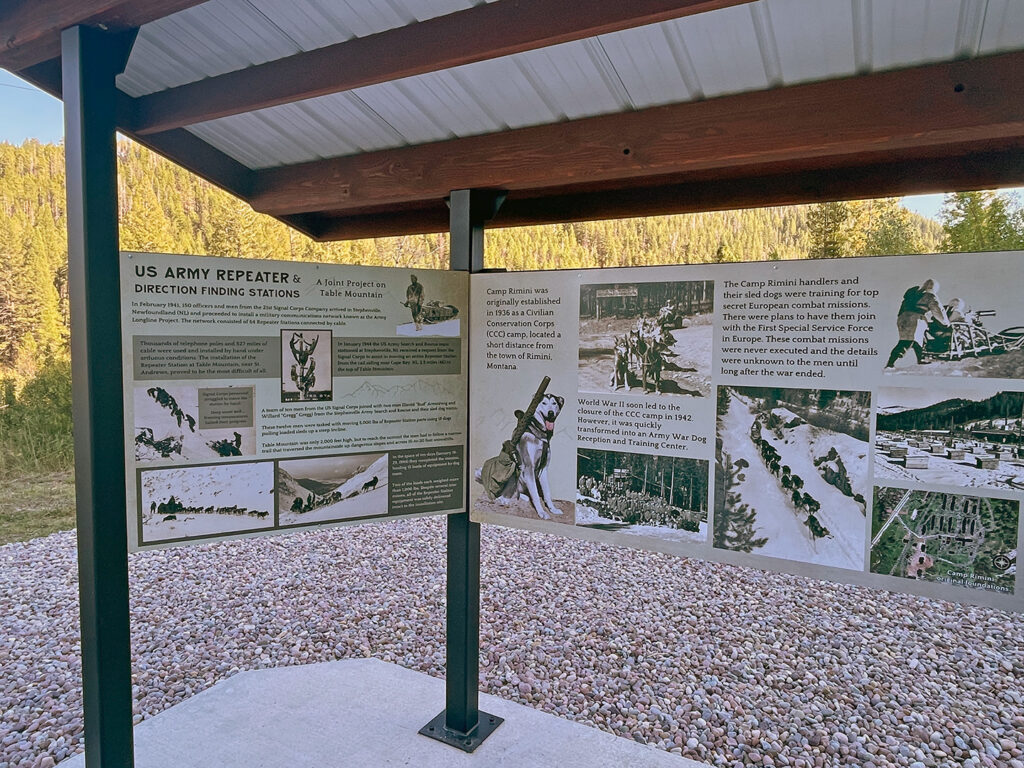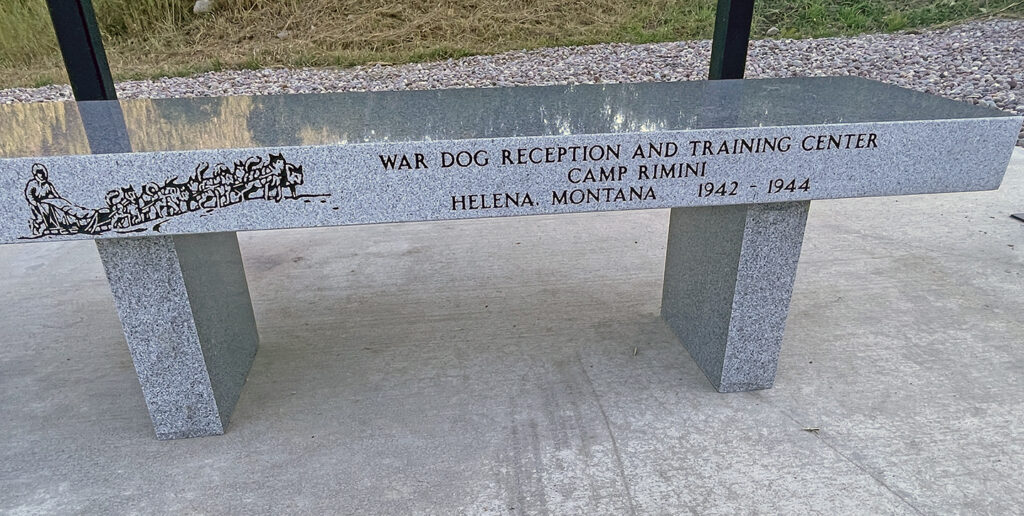News and Events
IN THE NEWS
Enjoy the 26th Annual Montana Military Museum Wine Fair: Dedicated to the Heritage of Montana’s Military
Battle of the Bulge: A Montana Perspective on the 80th Anniversary
Bomb-blasted American foothold”: How a Butte man survived Wake Island, life as POW in WWII
150th Veterans Day Events
Montana's Merci Car
Montana State Veteran’s Cemetery POW/MIA Memorial
Montana Merci Car Turns 75
Farewell to Jim Duffy
Farewell to Pat McCain
Vigilante Day Parade - May 3rd, 2024
80th Anniversary First Special Service Force Battle of Monte la Defensa, Italy
Helena, MT – 80 years ago, December 3, 1943, the legacy of the First Special Service Force began on a mountain top in central Italy. The mountain was named Monte la Defensa and was the southern most fortress of the German Winter Line, a series of mountain tops across central Italy occupied by the German Army. The Allies were fighting north up the boot of Italy in the fall of 1943 on their push to Rome and the eventual liberation of Italy when they ran into the Winter Line and were stopped. For the next several weeks, the allies tried to clear the Nazis off Monte la Defensa, with no success and very high casualties.
The First Special Service Force arrived in Italy on November 19, 1943 and was immediately assigned the task of clearing the German soldiers off la Defensa, along with several other mountain tops of the Winter Line. On the night of December 1, 1943 the First Special Service Force marched 10 miles in the snow and rain of the Italian winter, and under the cover of darkness, to the base of the northern cliffs of Monte la Defensa. The Force waited in silence throughout the day of December 2, close enough to hear the German soldiers talking; close enough to smell their food cooking. Under the cover of darkness on the night of December 2, 2nd Regiment of the First Special Service Force scaled the 300-foot cliffs on the north side of la Defense in fog, rain and snow. By daybreak on the morning of December 3, 300 Forcemen were on top of the mountain when the battle began. Within four hours the men of the First Special Service Force had pushed the German soldiers off la Defensa. For the next six weeks the First Special Force cleared the mountain tops of the Winter Line, fighting north to Casino. The First Special Service Force was relieved on January 16, 1943 after 45 days of continuous combat. The Force’s combat echelon on December 3, 1943, the battle of la Defensa, was 1,800 men. On January 16, 1943, when the Force was relived, fewer than 500 Forcemen came out of the mountains.
The First Special Service Force was a unique joint Canadian American top-secret Force constituted under LTC Robert T.Frederick on July 9, 1942 at Fort William Henry Harrison west of Helena, Montana. The First Special Service Force was airborne-trained and highly skilled in mountain operations and amphibious assaults with tough, physical training concentrated on weapons proficiency and demolitions. When tested by the US Army prior to deployment, the First Special Service Force scored the highest in infantry proficiency of any unit in the Army.
Following the mountain campaign, the Force played a key role at Anzio where they held a division-sized sector along the Mussolini Canal. Aggressive patrolling and raids by the blackened faced Forceman earned them the nickname “Black Devils” by the opposing Germans.
Members of the First Special Service Force were the first Allied troops to enter Rome on June 4, 1944.
The Force’s final campaign was the liberation of Southern France. The Force seized two islands off the coast of Southern France to open the way for the Allied landing force, and then fought northeast along the coast through the towns of Grasse, Plascassiere, and Menton where the unit was deactivated on December 5, 1944.
In 251 days of combat the Force suffered 2,314 casualties – 134% of its combat strength. They captured 30,000 German prisoners, won five US campaign stars and eight Canadian battle honors. The Force never failed a mission.
The surviving veterans of the FSSF dedicated a monument to their fallen brothers in August 1947 in Helena’s Memorial Park. The Cenotaph east of the monument includes the names of 488 men who made the ultimate sacrifice in World War II.
Most gratifying to the Veterans of the FSSF is that its traditions and honors have not died but are carried forward, with its lineage embracing the outstanding active Special Forces units of two great democracies: The Canadian Special Operations Regiment and the Special Forces of the United States Army.
On February 3, 2015, the United States Congress presented the Congressional Gold Medal to the First Special Service Force, “In recognition of its superior service during World War II”. Forty-three original FSSF Veterans attended the ceremony at the United States Capitol, along with over 800 family members, friends, and members of Congress.
On August 21, 2015 veterans of the First Special Service Force presented their Congressional Gold Medal to Fort William Henry Harrison, where the Force trained 73 years earlier.
For further information, contact Bill Woon, (406) 461-7485, or Ray Read, (406) 235-0290.

New Memorial Pavilion honors Camp Rimini
Nearly 30 people gathered Saturday for the dedication of the Camp Rimini Pavilion west of Helena.
The pavilion was made possible through a donation from the David W. and Alice L. Armstrong Jr. Trust.
Established in 1936 as a Civilian Conservation Corps camp, Camp Rimini housed up to 200 CCC volunteers working with the U.S. Forest Service. World War II led to the closure of the camp and it was made into an Army War Dog Reception and Training Center and used for training of sled and pack dogs.
It accommodated 150 military personnel and more than 700 dogs of various breeds. Much of what was learned is used today in sled dog racing and mushing. Camp Rimini is 9 miles west of Helena on Highway 12 and 4.5 miles south on Rimini Road.
David Armstrong III spoke of his father, David Armstrong Jr., and his dad’s experiences at the camp.
“I really like it,” he said of the pavilion which features a bench, shelter top and storyboards about the history of Camp Rimini.
“It really brings everything into focus,” Armstrong said, adding he hoped it would be a place where people would come out, walk around and have a picnic.
Armstrong Jr. came to Helena in early 1943 to begin training sled and pack dogs at Camp Rimini, one of two sites that produced dogs for the Army’s K-9 Corps during WWII. He led the Army’s training of 850 sled dogs and 100 pack dogs, as well as the GIs as mushers and handlers.
He co-founded the annual “Race to the Sky,” which preserves the legacy of the soldiers and dogs who served at Camp Rimini. The race is described as one of the most challenging and beautiful sled dog races in the world.
Mark Larson, Armstrong Jr.’s nephew, said he helped his uncle take care of kennels and race dogs for the Race to the Sky after the war.


Larson said his uncle, who was 100 when he died in 2021, would appreciate the new pavilion.
“He would like it, especially the fact that it is about the camp and not him,” he said. “It was always about the dogs and it was always not about him.” Rimini was chosen by the Army as a training center because of its superior snow conditions and accessible mountainous terrain. Camp Rimini was one of four temporary World War II posts established by the U.S. Army quartermaster general as war dog reception and training centers under the Dogs for Defense program.
The camp accommodated some 150 military personnel and several hundred dogs of various breeds. In addition to the sled dogs, there were pack dogs and guard dogs trained at the camp. During the dry months the dog teams trained pulling stripped car chassis. At the height of activity in 1943, over 150 military and civilian personnel were assigned to the 160-acre post.
David Armstrong III thanked volunteers of the Montana Military Museum who “work tirelessly” to preserve military history.
He also thanked the East Helena High School welding class and their teacher Casey Harris. These students fabricated the pavilion from a design model built by museum volunteer Dave Cogley.
The storyboard panels mounted in the pavilion were designed by media specialist Kathryn Tuss.
Armstrong III also thanked the Helena-Lewis and Clark National Forest and Mandy Alvino, the recreational program lead, adding the Forest Service was instrumental in locating the pavilion on this site under a special use permit.
He said he hoped the pavilion would serve as a tribute to those who served.
“It is our hope that this pavilion will honor the service of the men of Camp Rimini to their country, and they will not be forgotten,” he said.
Contributors to the Camp Rimini Memorial Pavilion
Recognition of Contributions and Support Planning, the design, construction, and installation of the Camp Rimini Memorial Pavilion. This project is funded by an unrestricted grant from David W and Alice L. Armstrong Gift Trust.
We recognize the following contributors.
- United States Forest Service, Helena-Lewis and Clark National forest for granting the Special Use Permit for the Pavilion.
- Mandy Alvino, Recreation Program Lead. Helena and Townsend, the Point of Contact on this Project
- East Helena High School, East Helena; Casey Harris, Instructor, for EHHS Welding Class. Students of East Helena High School Welding Class.
- R & R Alignment and Powder coating, Helena, MT
- Fort William Henry Harrison Museum Foundation Officers and Board of Directors
- Volunteers of the Montana Military Museum; David Cogley, Wayne Waters, Mike May, Connie Cole, David Cole, Marge Peterson, Pam Jackson, Ray Read
- Montana Granite Industries, Helena and Great Falls, MT
- Signs Now, Helena, MT
- Powell Concrete Powell Custom Concrete and Design, Helena
- Pavilion Assembly Crew (David Cogley, Wayne Waters, Mike May, Kent Lindsay)
- Bill Ries, Rimini Skid Steer Equipment Support
- Sheryl Olson, Contributor (Co-Director w/ Dave Armstrong of First and subsequent Race to The Sky events
- Pam Beckstrom of the MT Mountain Mushers
EVENT CALENDAR
BLOG ARTICLES
Recent Posts
- Proclamation in recognition of the return of the Chet Shore – Governor Donald Room and the 163rd Infantry regiment rooms to the Montana Veterans and Pioneers Memorial Building
- M48 Patton: The U.S. Army Tank Built for 1 Mission Only
- The Army’s M48 Patton Tank Can Be Summed Up in 2 Words
- “The Jungleers”
- Enjoy the 26th Annual Montana Military Museum Wine Fair: Dedicated to the Heritage of Montana’s Military
- Native American Code Talkers
- Honoring an ARSOF Legend
- The Battle of Biak: “A Terrifying Glimpse Into the Soul of Mankind”

